Wright Brothers Day

Wilbur and Orville were shepherds. They were always very united, even if they were very different: the elder was silent and lonely, and the tranquility, the reflection, the will were the axes of his personality; the little one was more open; he was not as cool and intuitive as his brother, but he was much more friendly than him.
His fondness for aeronautics began in 1878. His father gave them a small paper helicopter moved by a rubber engine. However, the invention came later.
The excitement of gliders
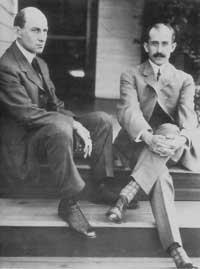
First they devoted themselves to journalism: They created the newspapers The Midget and The Evening Item. Then a bicycle shop was installed, in which workshop began to invent the first flying machines. In 1896, the German pioneer Otto Lillienthal died after suffering an accident with a glider built by him, and upon learning about it, they decided to use their methods to build the first engine on solid bases.
Octave Chanute contacted the French engineer after reading Progress in Flying Machines, his 1894 aviation book. Chanut had a good relationship with Frenchman Louis Mouillard, another pioneer and Captain Ferber. The latter is quickly heated when he knows the works of the Wright brothers and makes them known in France.
It is not yet clear that the twist of the wings was invented by the Wright brothers for themselves or based on the book of Mouillard L’Empire de l’air, a system that is perfectly described in it.

Based on the ideas of Chanute, they built a small biplane kite of 1.50 meters, with the tips of the wings joined by four cables that powered the kite from the ground. A banker from Dayton, called Huffmann, rented them land to rehearse, but it was not very appropriate for it, and they began to look for another. It was discovered in North Carolina: Place called Kitty Hawk. A tate told them that the place was full of sand dunes and that the wind was blowing constantly.
First sessions
In 1900 they set up the first glider at the door of Tate's house. It is a biplane of 5 meters of length south and 15 meters of surface south. A motto of depth was placed on the façade. The pilot had to lie on him and could only control him when the wind allowed him. However, it was mainly used as a comet, that is, using ropes that were maneuvering from the earth.
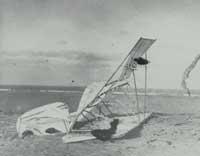
In September 1900 he wrote to his father: “You cannot say that the device flies. I only use it to solve balance problems in the flight. If not, my projects are very advanced compared to my previous methods. First of all it is a matter of completely controlling the device, in some way, since once achieved the problem of the engine will be solved immediately".
In 1901, the Wright brothers began testing with a bigger and better glider. In free flight he was able to keep the pilot if the wind was medium speed. These trials were conducted 7 kilometers south of Kitty Hawk. Chanute, a seventy year-old man, was there cheering.
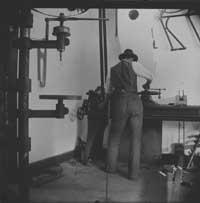
The machine was not stable, but it offered very nice experiences. In addition, it allowed them to analyze all the theories that until then were known. It is true that sometimes these experiences were desperate, but through them they came to build a real wind tunnel in Dayton. Square Era: 35 centimeters wide by 2 meters long. This tunnel analyzed the behavior of several southern profiles, blowing with a fan.
In September 1902 it was tested with a third glider, with longer wings and drift back. In two months it exceeded a thousand plans and managed to climb up to two hundred meters.
They still did not solve the problem of unilateral equilibrium, as the inclined South tended to generate resistance. To correct this error, they combined the steering motto with the South Turn system, allowing the two devices to be manipulated simultaneously. It was a very effective solution. Therefore, once the aerodynamic control of the glider was obtained, they were able to move on to the next stage: the motorized airplane.
They went to car manufacturers to get the engine, but they did not find engines. That is why they themselves manufactured Charles Taylor helped by the mechanic. Construction of a 4-cylinder engine per line: It had a force of 12 to 16 CV and with chains moved the propellers against wooden rotatives, also manufactured by themselves.
Year of success
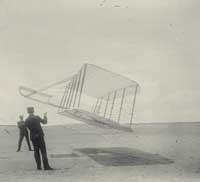
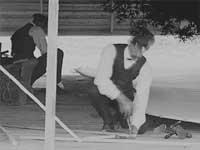
At the end of 1903, the Wright brothers were ready to try again with the new airplane. It was called Flyer and tests were conducted at the Kill Devil Hill near Kitty Hawk. It was an apparatus similar to that of the planning of 1902, but of 12,34 meters of length south, 45 meters of surface south and 6,82 meters of length. The pilot had to go lying on the wing as in the gliders.
The first attempt was made on December 14. The apparatus had skates to facilitate its landing and slid against the wind by a wooden lane located on the slope of a dune. Chopsticks were made to decide who released the appliances, and Wilburri touched him. The apparatus managed to take off, but immediately it was wrong and fell to the ground. Speed loss was the cause.
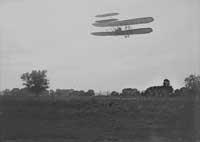
On December 17 a plain was chosen. It was cold and windy. It was Orville's turn. Thus he described his attempt to become famous around the world: "When we got up, the wind was blowing north about 35 km/h. For a few minutes the engine and propellers were rotated to heat up. Then I put myself on the device to make the first attempt: It was 10:35 and the wind was still cold. By releasing the cable holding the appliance began to move faster and faster: 12 or 13 km/h or Arriving at the fourth section of the rail, took off. He wandered. The strength of the wind and the lack of experience of the pilot caused an increase and a descent. When the plane was 35 meters from the end of the rail, it collapsed. The flight lasted 12 seconds. For the first time in history, many machines rose up themselves with a person in the area. He sailed without slowing down, taking air at the height point."
Wilbur and Orville made two flights, one each: They lasted between 12 and 15 seconds. Then Wilbur took off for the last time: The flight was 59 seconds and traveled 260 meters. In the end, the apparatus fell and deteriorated. The essay was seen by 5 witnesses, so it is considered the first flight in history.

The ondarrutarra Juan Arantzamendi has sent us this document. This is the column published by the ABC newspaper on October 4, 1903, written by journalist Alfredo Marquerie. By then, the Wright brothers did their first sessions, but they still did not get the first flight. Due to the charm and historical interest of the document, it has been published as such. Eskerrik asko Juan for sending this interesting text.
|





